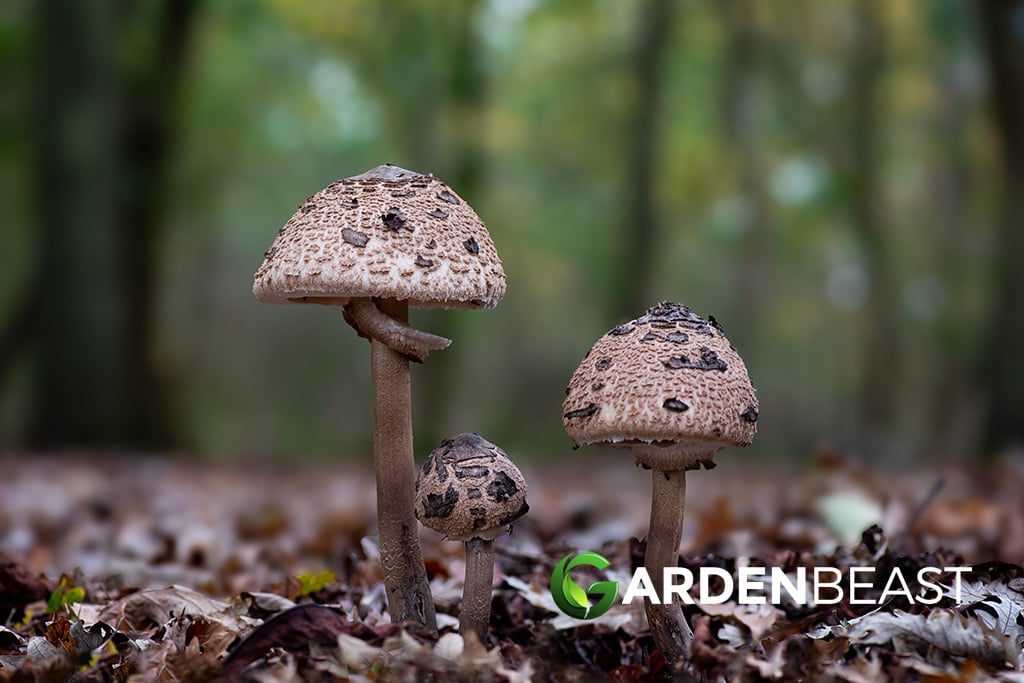Every autumn I stare at the patch of fallen leaves from my trees and think: “Better tidy those up!” However, battles have been raging online and in gardening circles about whether these leaves should be left to rot naturally where they fall or whether it’s better to add them to compost or leaf mould containers. Let’s look at the pros and cons of each of these options.
6 Advantages Of Sweeping Them Up
Visually tidy
Using the rake, the sweeping brush and filling up bags does make for a tidier appearance to the drive, the lawn, the school or office entrance, or wherever they drop.
It’s great exercise
I love a good sunny afternoon when the air is not chilly to sweep leaves. By the time you have done a lawn under a tree or a full driveway, your cheeks will be flushed and you have probably chatted to a few of the neighbours too.
It’s better for your lawn
Lawn experts claim any fallen leaves will cause damage to the perfect lawn by depriving it of light at the latter end of the year. Think of golf courses and the work they do to maintain the lawns by removing every last leaf. It is also true that by removing the leaves you prevent any lurking fungus and you allow the grass lots of light and air to store up for the winter. All this raking of leaves should give you a perfect lawn next spring too so you have a feel-good factor here.
Vine weevils
Vine weevils lurk undercover and overwinter in leaf mould from vines so if you do not clear these away, next year’s vine roots are not going to be happy. This is part of a healthy clean-up of the garden routine every autumn if you grow grapes. You can just move the lot to the compost heap where everything will eventually rot down.
Leaves are an accident risk
If not collected from public paths and school areas, I think leaves are an accident risk. If you do not tidy them up, wet leaves become very slippery, and even more so when the frost or snow settles on them. Small children may not mind them, but older people and anybody with a disability and in a wheelchair (or using walking aids) are saying loudly: sweep them up! Online forums have regular questions about whether it is the person who owns the tree that should be sweeping up all the leaves. The legal side is that any leaves on your property are your issue. So if the postie or the delivery driver slips on them, you may be liable for that.
Better relations with neighbours
If your tree hangs over the public path outside your house, many people are not happy with you for leaving them there. This is also one of the main reasons neighbours fall out; the others include a tree shading their window or the dividing wall and who is responsible for this. My advice is that sweeping the leaves is a neighbourly thing to do particularly if they are elderly. If it is your tree and they don’t like them, it’s polite.

6 Disadvantages Of Sweeping Them Up
This is a natural process
Leaves have been falling forever and nature decomposes them gradually to allow the goodness from the leaves to fertilise next year’s growth so it’s best to let them be. The gorgeous colour displays and beautiful patterns formed by trees as they change the colours of their foliage offer us wonderful vistas walking through parks and fields at this time of the year.
Noise Pollution
Leaf blowers are noisy and a neighbourhood nuisance, according to those who value their autumnal gardens for a quiet cuppa. Strimmers ditto, say the folk who prefer nature to be left in peace over the winter. However, lawn experts say that strimming fallen leaves or using the lawn mower on leaves will reduce them to fine particles that can easily be absorbed by the soil, so noise is the only disadvantage here to using machinery to move them. Another disadvantage is that the blown leaves are not properly disposed of because if they end up in gutters from roads, they will eventually end up in our waterways. Like sludge from farms, they offer even more nitrogen which may stay in a local pond producing algae and even starving fish and local plants of oxygen. Make sure the leaves you “tidy” go into a compost bin or are collected by your council green waste collection so that they go back to the earth as a decomposed soil nutrient not an environmental disaster for the waterways.
Bugs
Lots of helpful creatures shelter in leaf mould, like earthworms, caterpillars, butterflies, slowworms, and some moths. Moving the heap means you disturb these useful creatures or expose them to freezing winter temperatures. Hedgehogs are known to cuddle up in thick leaf drops too and feed off anything in the mix. Overall, nature has given insects and small mammals a warm and nutritious home for winter and you may be upsetting a whole ecosystem if you move them.
Hard Work
It’s hard work that never seems to stop. You can sweep once a day, once a week, or twice a week and you still have leaves all over your garden. So why bother? Another factor is different trees shed their leaves at different times so your raking, strimming, blowing and mowing may continue for months.
No Fun
No leaves for kicking! Who doesn’t remember kicking a bunch of leaves in glee blown by a careful park-keeper when the autumn colours fill the local park? This is a fun activity and should be protected at all costs! This is my cheeky addition because I probably am in favour of moving leaves to leaf mould (see more below) or sweeping them to avoid slipping in frost but I love donning my wellies for a kick of the leaves. In fact, I think autumn is probably my favourite season to visit forests for this reason alone.
Fungus Growing
Fungus grows in leaf mould. For any mushroom collectors, the idea of sweeping up leaves means that you are disturbing their picking grounds. However, I have to say that in kicking the leaves I have been finding lots of mushrooms these last few weeks after all the rain we have had in the UK. My prize in October was the edible parasol below.

These are gorgeous, large mushrooms with an unmistakable pattern on their caps and the way the cup resembles a parasol when viewed from the top. Not to mind that they are delicious too! Lots of other mushrooms can be found in leaf mould particularly if it has been raining.

FAQs
Can I use fallen leaves in a useful way?
Definitely! Leaf mould is a valuable soil additive when planting new seeds or just giving your soil a boost. Some gardeners use them as mulch and spread this around the area where tender plants (like dahlias) are underground to keep the ground warmer but also to add valuable plant matter, which helps to retain moisture and is loved by worms and insects.
Rotting leaves can decompose to a wet, slimy mass of brown in about 6 months so it is important to allow air to circulate as well. To use it in potting soil mixes, it must be dry and crumbly so leave it for 3-6 more months if it is just a wet mass of leaves.
How do I make leaf mould?
My favourite way is to roll chicken wire into a circular shape 2-3 feet wide supported by whatever stakes are available, and just fill this with leaves as they drop on my allotment.
You can also reuse an old compost bag or a large polythene bag to collect leaves. Make a few holes in the end of the bag to help keep it aerated and to allow rainwater to go straight through.
Keep adding leaves as they fall. Store the bag or wire container outside and tamp down the top leaves if it is very full. Worms will soon find the pile if you place it on the soil to start with but I am always amazed how worms find a polythene bag filled with leaves on the concrete close to the front door too. You may be surprised by a frog or two as I have been but this is such a welcome surprise.
Allow it to decompose all winter and by spring, empty the container and you have a fabulous crumbly mix which adds bulk to new pots or a new garden bed.
How do I use leaf mould?
Check the bag or container to make sure the leaves are dry and crumble in your hands. If not, leave them for a few more months.
Crush the dry leaves in your hands, add this to a pot and then mix it with some compost and then add your new seeds. Water well as usual. If you find any earthworms, just move them to the compost bin.
You can also use leaf mould as mulch. Mulches retain moisture, enrich the soil and offer delicate plants some frost resistance. Spread it around fruiting trees late in the autumn where it gradually is absorbed by the soil. It doubles up as a weed suppressant too.
Can I use pine needles in leaf mould?
You can but remember that pine needles are quite acidic so this leaf mould would suit plants that love acid-loving leaf mould. Blueberries are a good example or hydrangea plants. However, it is not really something I use a lot because pine needles seem to take ages to decompose and often after 6 months I just have a burnt brown selection of pine leaves. So you can, but you will need to have acid-loving plants to make it worthwhile.
Conclusion
This is a topic that can have gardeners arguing for both sides and I’m not really sure I have made up my own mind yet but I hope you are more knowledgeable about the pros and cons of sweeping leaves or not. Oh well, let’s get the wellies on and see what happens next time I step onto my leaf-strewn front driveway! Hopefully, you can make some leaf mould at least and do send us any thoughts on the subject too.
